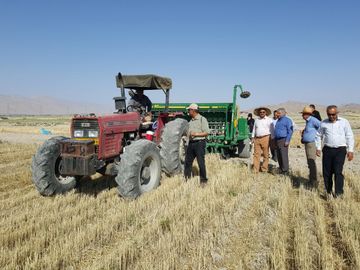My focus with Regenerative agriculture
Putting Soil and Biodiversity at the Centre
Conservation & Regenerative Agriculture
Conservation and Regenerative Agriculture are nature based solutions to degradative tillage-based industrialised agriculture. These agriculture and land management approaches are based in practical application of context-specific and locally adapted interlinked principles - designed to protect and intentionally enhance natural resources and biodiversity in a shared responsibility framework to mitigate and or adapt to the effects of climate change.
Climate Change Mitigation

Decrease GHGs
Decrease fossil fuel use, remove tillage, reduce methane production, increase fertiliser efficiency and NUE
Avoid GHGs
Reduce deforestation. Reduced rice paddy. Eliminate residue burning. Reduce food loss.

Remove GHGs
Increase forests, riparian areas, wetlands and buffers (estuarine). Carbon sequestration. Holistic farming systems. Restore degraded lands. Shared-responsibility framework. Nature-based solutions.
Climate Change Adaption
Alter exposure
Resilient varieties, biodiversity, native crops and crop timing, diverse cover crop mixes, irrigation efficiency. reduce erosion. Increase fertility, amendments, compost, biochar, inoculation.
Decrease sensitivity
Forecasting and warnings. Proximal and Remote sensing. Post-harvest, storage facilities and assets. Land use planning and zone establishment.
Increase adaptive capacity
Information, education, extension, farmer field schools, Peer to peer learning. Integrated knowledge management.
Strategic Action Plans. Budgeting and investments. Institutional change. New partnerships.

Agricultural Nature-based Solutions: The Agroceological appraoch to food security
While the term “Nature-based Solutions (NbS)” is relatively new, it encompasses indigenous land management practices, Regenerative Agriculture (RA), Conservation Agriculture (CA) and edge-of-farm/community land management. However, the role of soil and terrestrial biodiversity in these Agricultural NbS has been underutilised and misunderstood in mainstream agriculture. Nevertheless, the shared-responsibility concept implicit in an agroecological approach positively impacts food security and socio-economic transformation through improved; soil health, water quality; biodiversity benefits; future-proofing resources, and agricultural supply chains and facilitates carbon-positive farming garnering internal and external investment. Even though increasing uncertainty and severity in weather patterns, food insecurity, soil degradation, unhealthy landscapes, and biodiversity loss are worsening at an alarming rate, the science is clear that AgNbS plus socio-economic practices can deliver; Better Production, Better Nutrition, Better Environment, and Better Life.
Farmers are producers and land stewards who are not compensated for societal goods or green economy creation, nor can they implement what they don’t know. Current subsidies and crop insurance are directed toward industrial-styled agriculture, rewarding degradative farming practices. Subsidies need to be repurposed (policy intervention) to incentivise a shared-responsibility nature-positive path, offsetting the risks in transitioning marginalised farmers on fragmented lands toward climate resiliency. Additionally, farmer and stakeholder education and collaboration in AgNbS are critical for food security and a carbon-positive agribusiness ecosystem.
Agribusiness ecosystems transition and strengthen communities in nature-positive agricultural production. Analogous to build back better with green infrastructure in urban spaces, the approach predominately engages the private sector (PS) from farmer to consumer and promotes a co-dependency between them. PS engagement extends across suppliers, service providers, collection points, markets, postharvest, logistics, social services and develops partnerships in agribusiness ecosystem training and AgNbS information sharing. The agroecological approach pilots AgNbS, entrepreneurial upskilling, innovations, new products (biochar, compost, medicinals, agroforestry), and income generation to achieve food security, wellbeing and equity.
Copyright © 2023 RegenAg-Asia - All Rights Reserved.
Example images of RA, CA and activities were taken by Dr McHugh whilst working with USQ, UQ, ACIAR, and CIMMYT.
Powered by GoDaddy Website Builder
